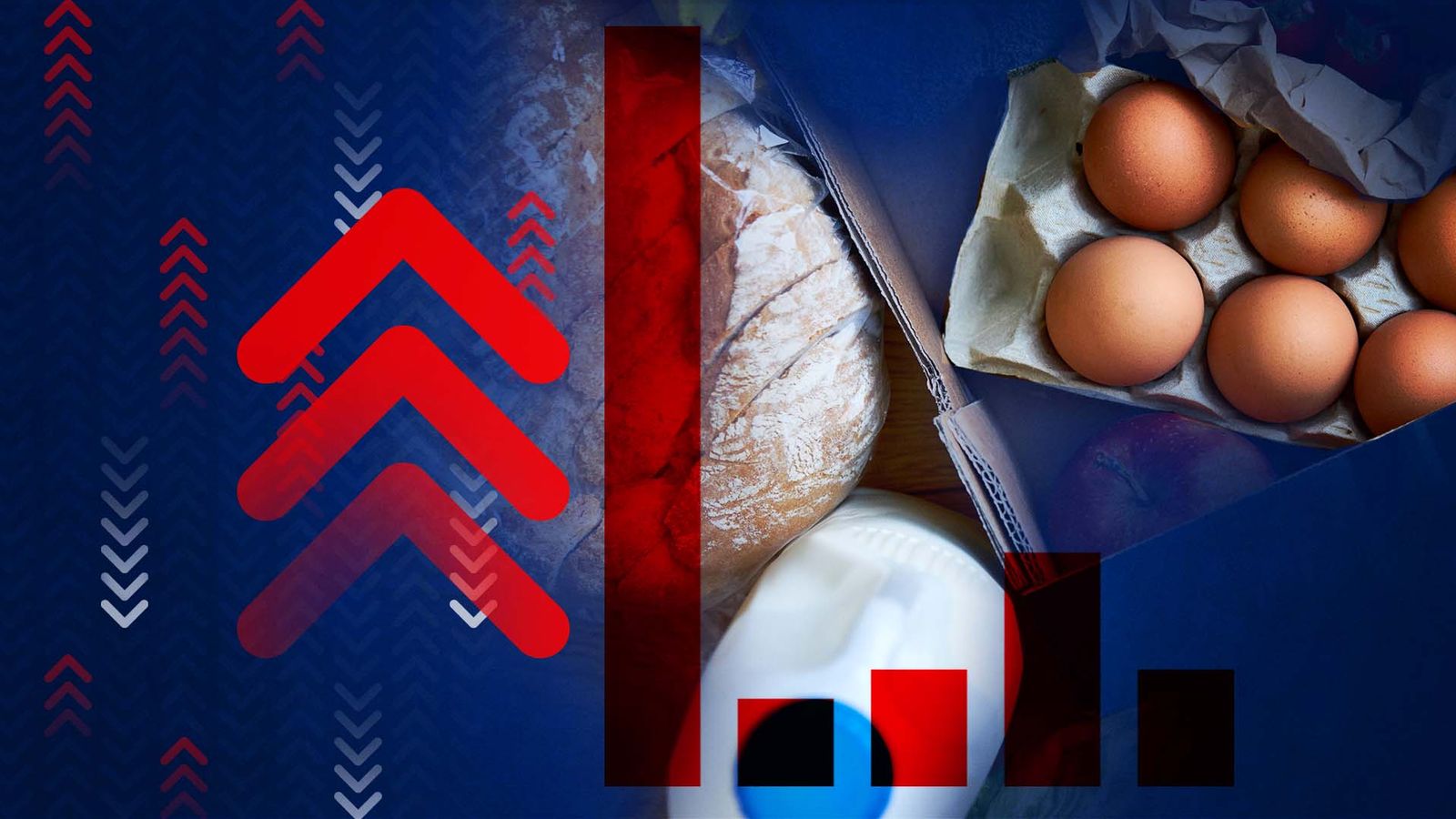Food prices have risen at a record rate – and these items are hardest hit

Food prices increased at the greatest rate since records began – spurred on by accelerated inflation in the price of meat, eggs and dairy.
Food inflation reached 12.4% in the year up to November, the highest rate in the food category since records began in 2005 and up from 11.6% in October.
The figures come from the latest BRC-NielsenIQ Shop Price Index, which looks at baskets of food and non-food items and measures the change in price over time.
Meat, eggs and dairy became more expensive as production prices increased due to high energy costs which in turn impacted animal feed and transport costs.
Coffee prices “shot up” last month due to high input costs, according to the British Retail Consortium’s chief executive Helen Dickinson.
Inflation also hit a record high across overall shop prices. They increased 7.4% in the year up to November, up from 6.6% in October and above the three-month average rate of 6.5%.
As a result, Christmas is to become more expensive than previous years, Ms Dickinson said, as sports and recreation equipment have especially high price increases.
Households are cutting back on seasonal spending in order to prioritise the essentials, Ms Dickinson added.
Many retailers are offering seasonal savings and price cuts and are hopeful of an uptick of shopper spending as we enter December, Mike Watkins, head of retailer and business insight at information services company NielsenIQ, said.
Advertisement
As consumers face a cost of living crisis, business sentiment, continued to deteriorate for the third consecutive quarter across the service sector, according to the Confederation of British Industry.
The decline was particularly sharp in business and professional services where sentiment fell at the fastest pace since May 2020, the CBI survey showed.
Business volumes were mixed in the sector with unchanged activity in business and professional services while consumer services saw a further fall in volumes. Profitability continued to drop in the three months to November as cost and price growth remained well above average in both sub-sectors.
Next quarter, volumes and profitability are expected to fall across the service sector with strong cost and price pressures expected to continue, according to the survey, based on responses from 297 service firms contacted between 28 October and 16 November.